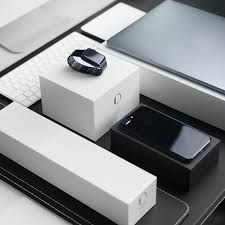If you’re an inventor or an innovator, you ought to be pleased with the fresh ideas you’re bringing forth. A patent can assist you in receiving the praise you merit for your ideas. For a detailed explanation of how to patent a product, continue reading.
How to Patent a Product or Idea
A patent formally acknowledges an invention’s property rights. Patents safeguard both tangible and intangible forms of the invention. In accordance with the United States Patent and Trademark Office (USPTO), anybody who “invents or discovers any new and useful process, machine, manufacture, or composition of matter, or any new and useful improvement thereof, may obtain a patent.” The typical U.S. patent is valid for 20 years from filing a patent application.
Types of Patents.
According to current patent law, the U.S. Patent and Trademark Office can grant three different categories of patents:
#1. Utility Patents
Utility patents according to the USPTO, are “granted to anyone who invents or discovers any new and useful process, machine, article of manufacture, or composition of matter, or any new and useful improvement thereof.”
#2. Design Patents
As the name suggests, design patents are concerned more with aesthetics than utility. The USPTO describes design patents as covering “a new, original, and ornamental design for an article of manufacture.”
#3. Plant Patents
Plants are patentable in the United States, which may surprise you. The USPTO offers the patenting procedure to “anyone who discovers and asexually reproduces any distinct and new variety of plant.”
Steps on How to Patenting a Product or Idea
The patent application procedure is designed to be user-friendly for the typical inventor while being challenging enough to distinguish between genuine inventions and inferior concepts that fall short of the legal requirements set forth by the government. When you submit an application for a patent, the patent examiners at the U.S. Patent and Trademark Office will analyze your invention and assess its patentability by contrasting it with previously released goods and concepts. It takes time; on average, you’ll have to wait 18 to 24 months before learning the outcome of your patent application. Following these important pointers will help you prepare for the filing date of your patent:
#1. Verify That Your Concept Qualifies for Patentability
If someone else invented your product before you, you won’t want to go through the entire patenting process.
#2. Keep Notes.
The existence of your invention should be documented as soon as possible. It’s likely that another inventor will be developing a comparable product at the same time, therefore, you’ll need to demonstrate the timeline of your creation to demonstrate that you didn’t steal any ideas.
#3. Create a Model.
The government will need a thorough explanation of the invention you want to patent. Making a working prototype and including a detailed written description of how it functions are the only ways to achieve this.
#4. Get Ready to Part With Cash.
Patents don’t come cheap. For simpler ideas, the process typically costs $5,000, but it can reach $20,000. Government expenses as well as the cost of valuable assistance are to blame for this.
#5. You Might Want to Submit a Provisional Patent Application.
The patent application process could seem intimidating and unreasonably expensive to a small company like a startup or a sole practitioner. You can submit a provisional patent application to swiftly and affordably protect your idea.
#6. Recognize That an International Patent Might Also Be Required.
The USPTO protects your rights as an inventor in the United States. As a condition of trade agreements, many nations uphold one another’s patents, but you could discover that an international patent office is necessary to completely protect oneself.
How to Patent a Product Design
By protecting your original product design with a patent, you can use and market it legally and make money off of an item’s distinctive appearance.
A product design patent offers you the right to use, market, and profit from an item’s distinctive appearance. It also gives you a legal claim to your original design. The United States Patent and Trademark Office (USPTO) will accept design patent applications if you want to protect a design. To be eligible for a patent, a product design must fulfill a few prerequisites:
- An object’s functionality is unaffected.
- It is a part of the object and cannot be taken away.
Process of Patenting a Product Design
- Choose whether or not to hire a design patent lawyer. A lawyer should be retained if you don’t have the time to thoroughly investigate design patents or to draft your application. Make certain to sign the power of attorney form.
- carry out a patent search. Check the patent database to see if a comparable design already exists. Your application should include a description of your research.
- Register a design patent with the USPTO. There aren’t any prepared application forms available for design patents, so stop looking. You can, however, still create your own application. It’s a smart idea to review a few already-issued patent drawings before you submit them. You can use this to acquire a clear picture of how yours ought to appear.
- Consult your patent examiner frequently. You will receive a notice from the USPTO with a filing date once they have received your application. A patent examiner will outline the steps to finish the procedure and obtain your patent if your application is approved.
- Adapt your application, if necessary, or file an appeal. A denied application gives you only a little window of time to respond. Modify the application’s content or make a case for it if it is rejected. The Board of Patent Appeals and Inferences will hear your appeal if you are subjected to a second or final rejection.
Why Is It Important to Patent Product Designs?
Design patents grant you the sole right to make money off of your creation. They also provide you the ability to pursue legal action against any person or organization that makes an unauthorized profit from your work.
The Reasons for Patenting Product Designs
A design patent application may be in your best interest if your product has a distinctive appearance. Why, specifically:
- It’s not too difficult to obtain a design patent.
- They are more accessible and less expensive than utility patents.
- Their application is getting simpler. The significance of design patents has grown recently. In the case of Egyptian Goddess, Inc. v. Swisa, Inc., the Federal Circuit of the United States Court of Appeals for the United States adopted the “ordinary observer test.” A jury need only compare a design patent and an infringing item to uphold a design patent.
- They provide total protection for intellectual property. Numerous innovators submit requests for both design and utility patents. If your innovation is distinctive in both form and function, you can obtain full protection by filing for both. For technology, this is especially true.
The Reasons for Not Patenting a Product’s Design
- The best way to safeguard your intellectual property isn’t usually with a design patent. Prior to filing, it’s crucial to comprehend what renders a design ineligible for patent protection:
- The layout has already found use.
- The layout has already received a patent.
- The applicant did not create the layout.
- It doesn’t have a particularly distinctive appearance. Does your invention provide a novel function but have a dated design? Instead, you should think about submitting an application for a utility patent.
- A distinctive work of art or a logo must be safeguarded. Patents concern the design of objects. Artwork, emblems, and logos are not included. Register these products for copyright or trademark protection to keep them safe.
- An industrial design needs to be protected. The US does take part in the Hague System but does not provide a separate form of protection for industrial designs. So, if you need to safeguard an industrial design in Europe, this might be a wise choice for you.
How to Patent an Invention
Your invention will completely alter how the world operates, but how do you bring your concept to life? For new, beneficial inventions that alter the way people do things, the United States Patent and Trademark Office grants patents. A patent application is a time-consuming and expensive process, but if you know what to look for, you can submit an application on your own. Find out how to patent your innovation by reading the information below.
#1. Comprehend Your Creation
Understanding your idea is the first step in the patent application process. What unique and practical qualities does the invention have, if any?
#2. Examine Your Invention.
Absolute novelty is required for patents. To encourage inventors to instruct the public on how to use their creations, exclusive rights to an invention are granted to inventors. You must do a search to identify any pertinent article, presentation, sales brochure, patent application, or issued patent that mentions your innovation or some of its components.
#3. Select the Kind of Protection.
A provisional patent application may be filed if you want a patent but still have some leeway to make changes. Proof that you are the inventor as of the patent application date is provided by a provisional application.
#4. Write up Your Patent Application.
It might be difficult to draft a patent application, especially a provisional one. Each component of a patent application, which consists of numerous components, may be rejected for formal or technical grounds. Read the Manual of Patent Examining Procedure if you intend to file it on your own. Create checklists for every section of your application, then double- and triple-check your work.
#5. Await an Official Response
The average wait period for a response from the patent office is one year or more. When you do hear back, the examiner can claim that your invention is not unique in light of the prior art, that it is not the kind of thing you can receive a patent for, or that you haven’t adequately described how it functions.
Is It Hard to Patent an Idea?
Unfortunately, if you have never filed a tax return before, the procedure might be frightening. Researching your idea and its market, producing intricate drawings, and learning how to write coherently while using highly particular terminology all take a significant amount of time to complete the process of taking an idea from conception to patent.
How Much Does It Cost to Patent a Product?
For a patent application, a patent attorney typically charges between $8,000 and $10,000, though the price may be more. The average cost to finish the patenting process for your idea is between $15,000 and $20,000.
How Do I Patent a Product Myself?
Steps on how to personally Patent a Product:
- Make sure your concept qualifies for a patent.
- Observe records.
- Develop a prototype.
- Be prepared to spend cash.
- A provisional patent application may be submitted.
- Be aware that you could also require a global patent.
How Can I Patent a Product for Free?
If you cannot afford an agent or lawyer, consider the USPTO’s Patent Pro Bono Program or Law School Clinic Certification Program. The registered patent agents or attorneys and inventors are paired through the Patent Pro Bono Program.
What Are the 3 Types of Patents?
Utility patents, design patents, and plant patents are the three categories of patents that the U.S. Patent and Trademark Office (USPTO) issues under U.S. Code Title 35. An invention must be unique, non-obvious, sufficiently disclosed, and claimed in precise, definite language by the patent applicant in order for it to be patentable.
Related Articles
- HOW TO PATENT AN IDEA LEGALLY: Comprehensive Guide
- LAWYER SALARY: Average Salaries By State, Experience & Field of Practice (Updated!)
- HOW MUCH DOES A PATENT COST: Everything You Need to Know About Patent Cost
- APPENDIX IN A BOOK: Meaning and How to Write One






